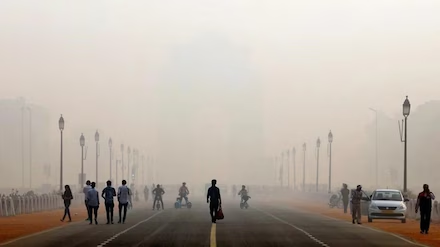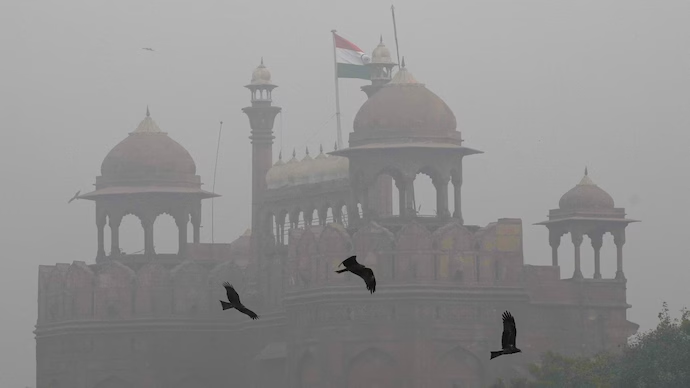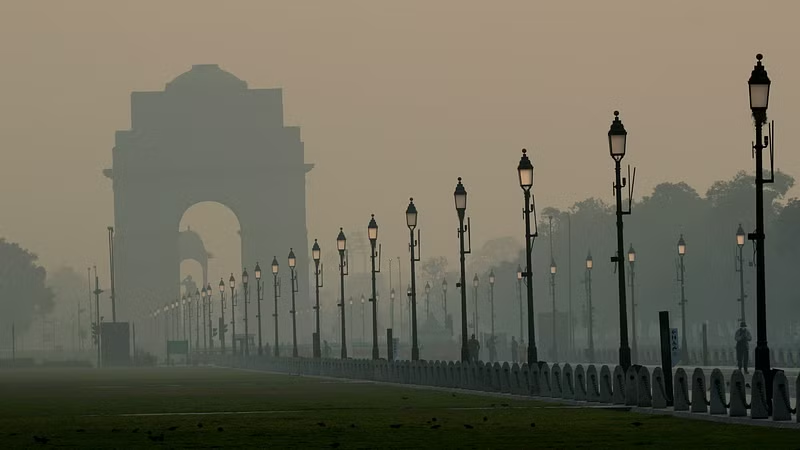Key Highlights:
The capital city of India, Delhi, faces alarmingly high levels of air pollution once again. On November 13, 2024, for the first time this season, AQI in the city has reached 418, for which its category is severe. This deteriorated condition comes with a huge health risk and speaks for urgent measures to totally combat pollution.
What is the Air Quality Index?
The AQI is an index measure of how polluted the air currently is or even how polluted it is going to be forecast. Its scale ranges between 0 to 500 and the higher the value is, the worse the quality is of the air. The ranges are categorized as such:

• 0-50: Good
• 51-100: Satisfactory
• 101-200: Moderate
• 201-300: Poor
• 301-400: Very Poor
• 401-500: Severe
Therefore, an AQI of 418 puts Delhi squarely in the ‘severe’ category with serious health effects on the population at large.
Causes of the Succession
Several reasons account for this recent spurt in the increase of pollution levels:

- Burning of Stubble: Farmers of neighboring states burn crop leftovers during the harvesting season, releasing humongous amounts of smoke into the air. It largely contributes to Delhi’s pollution during such periods.
- Vehicular Pollutants: The growing population and high concentration of vehicles in the city resulted in massive releases of pollutants, including nitrogen oxides and particulate matter.
- Industrial Activities: Industries and industries in Delhi release gases that have contributed to this pollution of air quality.
- Meteorological Conditions: As soon as the winter season begins, cold atmospheric temperatures and poor ventilation do not allow pollutants to spread and dilute in the atmosphere and tend to get settled near the ground.
Health Impact
Air quality levels classified as ‘severe’ can affect health in two manners:
- Acute Health Impact: Relates to recent health conditions, which are arising or worsening because of air quality.
- Respiratory Disorders: Higher incidences of asthma, bronchitis, and other respiratory diseases.
- Cardiovascular Diseases: The risk for heart attacks and other cardiovascular conditions is augmented.
- Eye and Skin Irritation: Some of the pollutants may cause irritation, and this might lead to itching and subsequently infection.
- Vulnerable Groups: It poses a more risk to children, the elderly, and others suffering from different pre-existing diseases.
Government Initiatives and Public Warnings
With the raise in pollution levels, the government has taken the following steps:
- Suspension of Building Operations: To minimize dust generation, the building operations have been suspended temporarily.
- Vehicle Restrictions: Partial odd-even restrictions along with restrictions on the plying of heavy vehicles have been implemented in order to cut down the vehicular emissions.
- Public Health Alerts: People have been advised to stay indoors, use N95 masks when going outdoors and avoid strenuous outdoor activities
Short-term Solutions
Delhi would need some wise, long-term interventions to address the air pollution challenge:
- Strenghthening Public Transport: Enhanced efficiency and accessibility of public transport would reduce the dependency on private vehicles.
- Involvement of Cleaner Technologies Adoption: Promote cleaner technologies and cleaner fuels for industrial use to minimize the emissions caused by industries.
- Afforestation Programmes: Implement afforestation schemes and develop green belts to retain the pollutants in the air.
- Strict Regulation Implementation: Implementation of stringent regulations will not allow the industrialists to prolong the period for disregarding implementation of environmental policies.
Conclusion
Delhi’s current air quality crisis is nothing but a wake-up call-the collective urgency and action the city desperately needs. Even though immediate measures matter for better public health, the aspect of survival strategy needs to be seen in the long term-to concentrate on sustainable practices and stringent enforcement, ensuring fresh breathing air for all residents of the city.
For Latest News Updates Click Here
